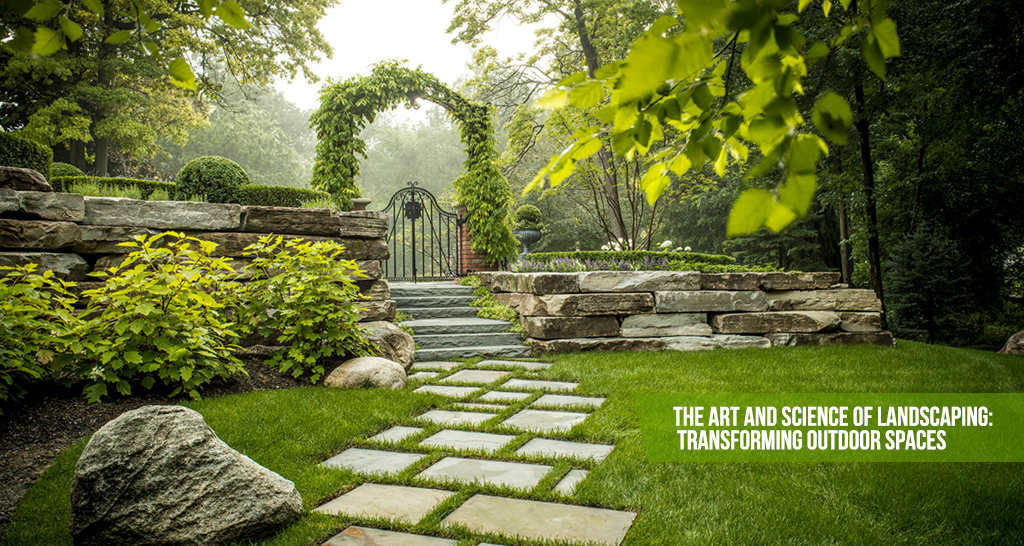Landscaping combines art and science to make outdoor spaces look beautiful and work well. A well-designed landscape not only adds value to a property but also creates a peaceful environment that promotes relaxation and well-being.
Popular garden styles include modern, traditional, country, Mediterranean, tropical, and desert. The guide also features award-winning project examples, regional design ideas for various climates and plant types, yard challenges solutions, and vegetable and container garden advice.
Historical Perspective
Landscaping has been around since ancient times. The Hanging Gardens of Babylon, one of the Seven Wonders of the Ancient World, are an early example of landscaping. Similarly, Japanese Zen gardens and the geometric gardens of the Islamic world also show how different cultures have designed landscapes over the years. Each culture added its unique perspective, creating our diverse landscaping traditions.
Core Principles of Landscaping
Landscaping and gardening allow creative expression with nature’s colors, textures, scents, and structures. Professional insights cover backyard planning with layouts, patios, water features, and hardscaping. Additional tips include boosting curb appeal with driveways, sidewalks, and front gardens, patio design with sizing, placement, and materials, and outdoor kitchen ideas.
- Balance and Symmetry
Balance in landscaping can be formal (symmetrical) or informal (asymmetrical). Formal balance involves creating mirror images on either side of a central axis, often seen in classical gardens. Informal balance, more common in contemporary designs, relies on the visual weight of different elements to achieve harmony.
- Unity and Harmony
Unity refers to the cohesive look achieved by repeating elements like plants, colors, or materials throughout the landscape. Harmony ensures that all components of the landscape work together aesthetically and functionally.
- Proportion and Scale
Proportion relates to the size of elements in relation to each other and the overall landscape. The scale ensures that these elements fit well within the space. Proper use of proportion and scale can make even a small garden feel expansive, and a large garden feel intimate.
- Transition and Flow
Smooth transitions and a logical flow between different areas of the landscape are crucial. Pathways, steps, and strategically placed plants can guide the eye and movement seamlessly from one section to another.
Elements of Landscaping
- Plants and Trees
Plants are the living components of a landscape, providing color, texture, and form. Trees offer shade and structure, while shrubs and flowers add layers and seasonal interest. Choosing plants for your home’s landscape can be daunting. Consider factors like climate, maintenance time, and exposure conditions (sun, shade, dry, rainy). Determine your goals—shade, privacy, wildlife attraction—and match plants to your garden style. Plants suited for one theme may clash with another. Use gardening zones to select climate-appropriate plants. Contact a landscaper for a tailored planting plan that fits your home, lifestyle, and climate.
- Front Yard Landscaping
Front yards traditionally serve two purposes: creating an inviting entrance to your home and enhancing its curb appeal. A well-designed landscape with carefully placed elements can significantly boost your property’s visual appeal. Consider various landscaping options, from formal courtyards with fountains to low-maintenance natural settings with native plants. Plan your vision thoroughly with the help of a landscaping designer to achieve a front yard that complements your home’s architecture and welcomes visitors warmly.
- Backyard Landscaping
Backyards have evolved into integral extensions of our homes, offering additional outdoor living areas for socializing and relaxation. They now feature amenities once exclusive to indoor spaces, such as fireplaces and fully equipped kitchens. Proper landscaping makes your backyard a versatile space for recreation, entertaining, and leisure activities. Enhance your home’s value with custom landscaping that reflects your vision and lifestyle. Start with a well-thought-out plan, gathering ideas and inspiration before embarking on your backyard transformation.
- Hardscaping
Hardscaping includes non-living elements such as patios, walkways, retaining walls, and water features. These structures provide functionality and define spaces within the landscape.
- Water Features
Water features like ponds, fountains, and waterfalls introduce a soothing auditory element and create focal points. They also support local wildlife and enhance the microclimate of the garden.
- Lighting
Landscape lighting extends the usability of outdoor spaces into the evening and highlights key features. Properly placed lights can create ambiance and improve safety.
Sustainable Landscaping
Sustainability in landscaping involves practices that are environmentally friendly and resource-efficient. This includes selecting native plants, using permeable materials for hardscaping, and incorporating rainwater harvesting systems. Sustainable landscapes require less water, reduce the need for chemical fertilizers and pesticides, and support local ecosystems. By simplifying landscaping using low-maintenance plants, basic materials, and straightforward designs, you can embrace current trends like meadow gardens with native plants, edible landscapes, and wildlife-friendly habitats. By harnessing nature’s beauty, a landscape designer can expertly choose plants, materials, and layouts to effectively bring your vision to life.
The Role of Technology
Modern landscaping increasingly integrates technology. Automated irrigation systems, landscape design software, and smart lighting solutions transform how landscapes are planned and maintained. Drones and 3D modeling allow for more precise and innovative designs, ensuring every detail is meticulously planned.
Conclusion
Landscaping is more than just an aesthetic pursuit; it is vital to creating functional, beautiful, and sustainable outdoor environments. For a private garden, a public park, or a commercial property, thoughtful landscape design can transform any outdoor space into a sanctuary that delights the senses and nurtures the soul. As the field continues to evolve, embracing both traditional techniques and modern innovations, the future of landscaping promises even greater creativity and environmental stewardship.

